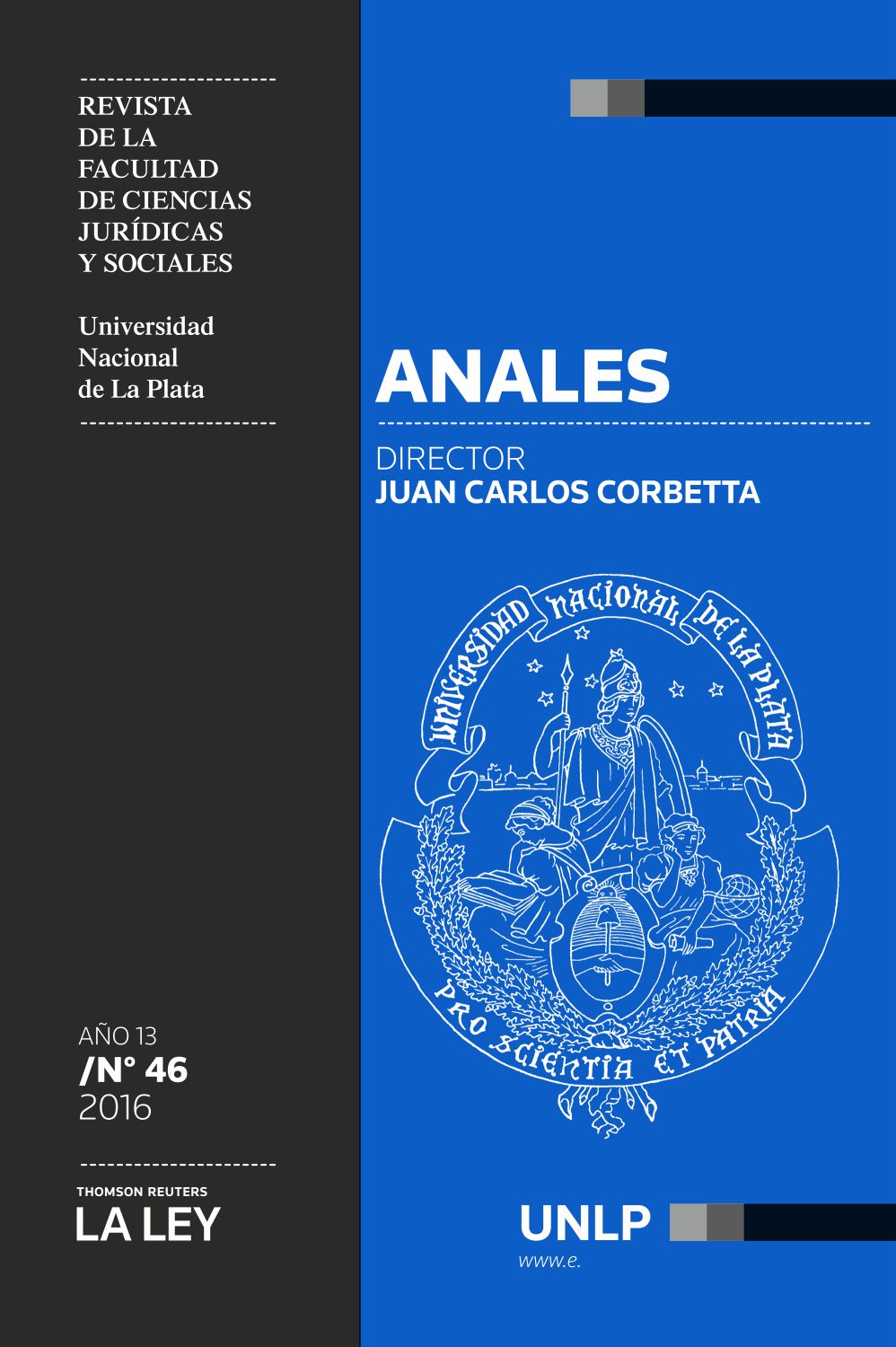Division or separation of powers (classical theory to what happens in reality)
Keywords:
power, division, organs, limited, freedomAbstract
It is known that the essential feature of the constitutional state is the limitation and control of power through the division of the same, creating a system of checks and balances to help ensure that each government body will perform within their respective constitutional orbit independently but coordinated. This fragmentation is intended to preserve the enjoyment of freedom of the citizens and the fullness of their constitutional rights. The audit each of the organs of government exercises over others is the hallmark of the principle of separation of powers, that within the Argentina Nation, according to art. 104 of the Basic Law, I reflected in a national government delegates, determined and defined powers. The constitutional practice and the socioeconomic development of the country shows clearly that the executive organ is who favored over the Legislative and Judicial. Thus, you can not stay oblivious to the reality that means recognizing the strength of the executive branch-not by rule of the Constitution, but by the sheer weight of the circumstances and the imminent danger posed by institutional recognition of events held by that power from powers that are not your own, at least in our system.
Downloads
References
AMAYA, Jorge Alejandro y SALVADORES DE ARZUAGA, Carlos (1992). “La Corte y la división de poderes”, en: La Ley. Buenos Aires: La Ley. E. 825.
ARISTÓTELES (1988). Política. Introducción, traducción y notas de Manuela García Valdez. Madrid: Gredos.
DEMICHELI, Alberto (1955). Formación constitucional rioplatense. Génesis unitaria y federal. Montevideo: Bareiro y Ramos S.A.
ECHEVERRÍA, Esteban (1947). Dogma socialista. Buenos Aires: El Ateneo.
ESTRADA, José Manuel (1895). Curso de Derecho Constitucional, Federal y Administrativo. Buenos Aires: Compañía Sud Americana de Billetes de Banco.
FUENTES, Claudia (2011). “Montesquieu: Teoría de la distribución social del poder”, en: Revista de Ciencia Política. Chile. V. 31. N° 1, p. 47-61.
IGLESIAS, María del Carmen (1984). El pensamiento de Montesquieu: política y ciencia natural. Madrid: Alianza.
JUNYENT BAS, Francisco (2013). “Vigencia de la República e independencia del Poder Judicial”, en: La Ley. Buenos Aires: La Ley. D. 251.
LINARES QUINTANA, Segundo (1956). Tratado de la Ciencia del Derecho Constitucional —argentino y comparado—. Parte Especial. Buenos Aires: Alfa. T VII.
LOCKE, John (2006). Ensayo sobre el gobierno civil. Traducción y notas de Claudio Amor y Pablo Stafforini. Buenos Aires: Prometeo.
LOÑ, Félix (2013). La Constitución. El libro que los “K” nunca leyeron. Buenos Aires: Librería Akadia Editorial.
LOÑ, Félix y MORELLO, Mario Augusto (2003). Lecturas de la Constitución. La Plata: Librería Editora Platense.
LÓPEZ, Mario Justo (1981). “La doctrina de la separación de los poderes a la altura de nuestro tiempo”, en: Anales de la Academia Nacional de Derecho y Ciencias Sociales. Buenos Aires. N° 18. Año XXV.
MONTESQUIEU, Charles de Secondat, barón de (2003). Del Espíritu de las Leyes. Madrid: Alianza.
RAVIGNANI, Emilio (1939). Asambleas constituyentes argentinas. Buenos Aires: Talleres S.A. Jacobo Peuser, Ldta. T. VI, segunda parte.
SANCHEZ VIAMONTE, Carlos (1956). Manual de Derecho Constitucional. Buenos Aires: Kapeluz.
SERRAFERO, Mario (2004). “Repensando la doctrina de la división de poderes”, en: Resnik, Mario (dir.), Colección de análisis jurisprudencial. Teoría del Estado. Buenos Aires: La Ley.
Downloads
Published
How to Cite
Issue
Section
License
Esta licencia no permite la generación de obras derivadas ni hacer un uso comercial de la obra original, es decir, sólo son posibles los usos y finalidades que no tengan carácter comercial.






























